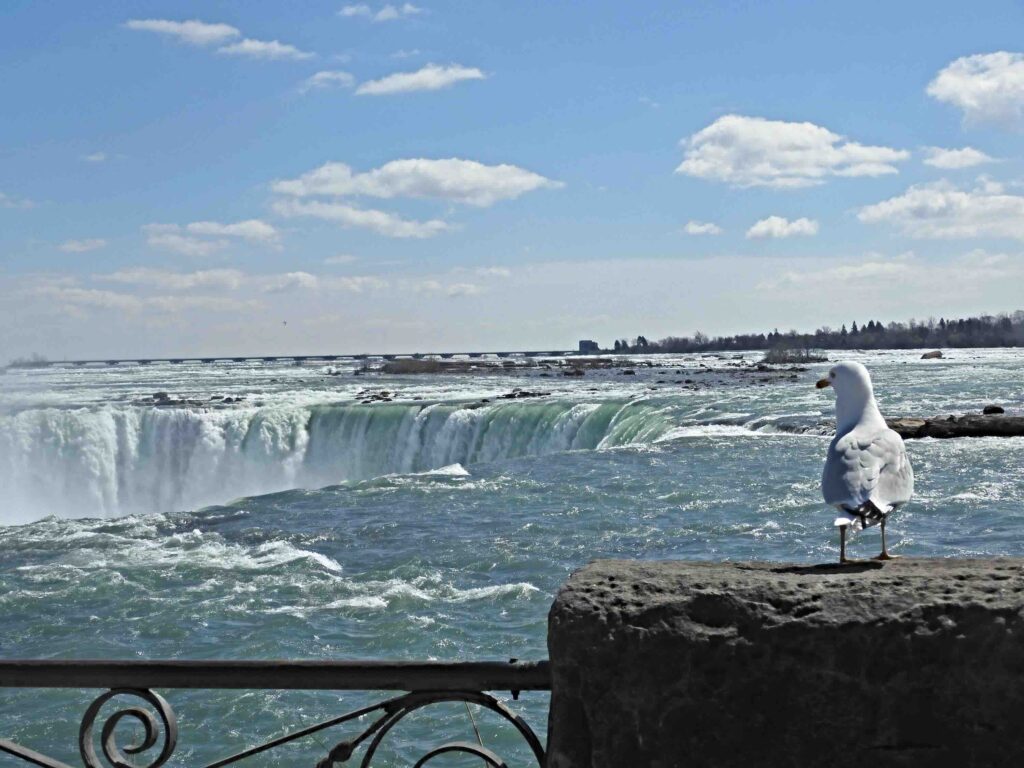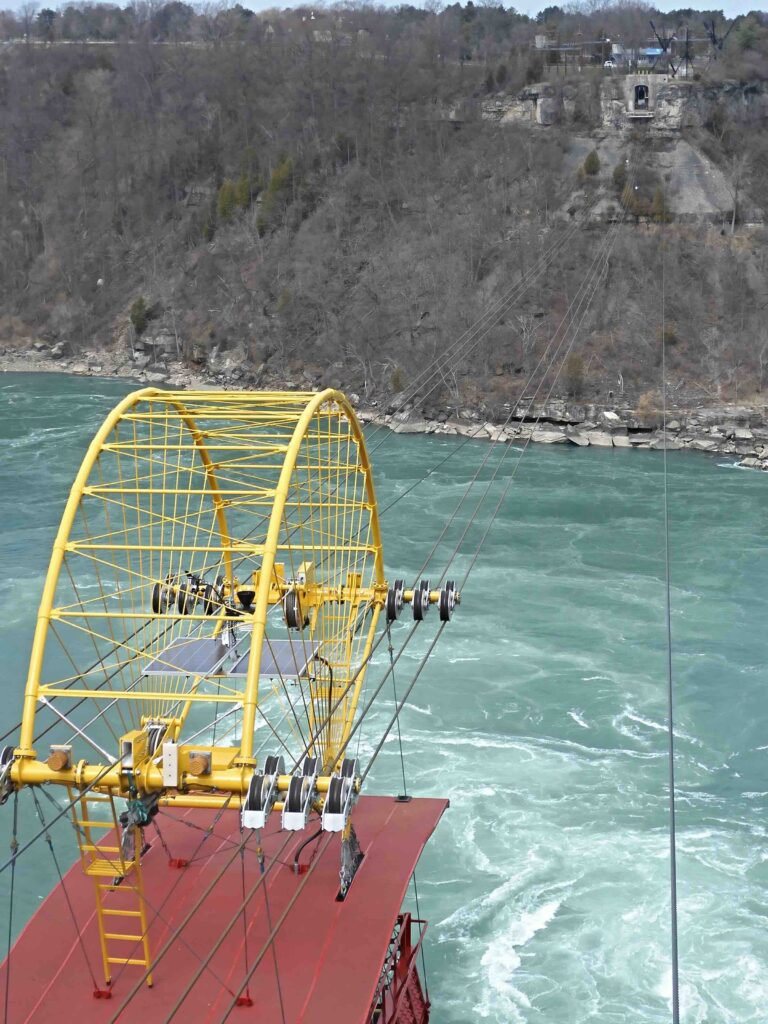Learning for the (long) weekend: The power of Niagara Falls

Canada’s most famous attraction is an opportunity to get up close to the force of nature in adventurous, exciting and educational ways.
Niagara Falls is where the power of nature meets the impact of innovation. If you haven’t been to the Falls recently, now might be the time to revisit – especially since The Tunnel at the Niagara Power Station opened.
Thanks to the power station museum, and other Niagara Parks Commission attractions, spending a weekend in Niagara Falls, Ont. can be a captivating educational experience, especially if you’re curious to see the great outdoors collide with engineering marvels.
The power of 168,000 cubic metres of water cascading over the crestline of the 57-metre-high Horseshoe Falls every minute helps generate electricity that keeps the lights on across Southern Ontario and western New York state.
Head to Niagara Falls to find out how. Believe it or not, Niagara Falls might be the weekend destination of choice for STEM enthusiasts, and it’s an easy drive from Hamilton.
Wait. I know what you might be thinking: Are you talking about Niagara Falls - that tourist destination friends visiting from faraway places demand to see when they’re in town? That city best known for casinos, Clifton Hill, Louis Tussaud’s Wax Museum (a feature since 1959), waterparks, and a dinosaur-themed mini golf park?

Niagara Parks versus Clifton Hill
Yes. That Niagara Falls. I’ll be the first to admit I’ve spent afternoons playing Skee-Ball at the arcade, eating lunch at the Rainforest Cafe (love the simulated storms), and then trying my luck at a few Wild Card slot machines in the evening at either Casino Niagara or Fallsview.
However, the Niagara Parks Commission has been rescuing visitors from tourist snares for more than 50 years. Thanks to the commission and the Niagara Horticultural School, the area around the Horseshoe Falls (a natural marvel thanks to melting glaciers millions of years ago) is accessorized with perfectly sheared shrubs and manicured gardens.
The Niagara Parks Commission is also responsible for the best Niagara Falls immersive learning experiences including The Tunnel at the Niagara Parks Power Station. One hundred and twenty years ago, a team of workers armed only with lanterns, dynamite, pickaxes, and shovels gradually dug a 680-meter-long tunnel (2,200-feet), 56 meters (180-feet) beneath the Niagara Parks Power Station. A century later, we can all walk through it to the edge of the Niagara River.
But first, let’s experience the Niagara River from both ground and air.
Walk along the rapids
The White Water Walk is the most under-rated Niagara Parks attraction, in my opinion. Along the 400-metre long boardwalk gripping the edge of the river, you literally experience the power and awe of the foaming rapids created by the Niagara gorge, up close and unobstructed by anything other than shrub foliage. The roar of trillions of gallons of water swirling violently against the rock-lined gorge drowns out any other noise including conversation. This is the power of nature unfiltered, and a cool scenic nature walk.
The White Water Walk is about four kilometres from the Horseshoe Falls, and it’s on the WEGO bus route – the transportation option offered by the Niagara Parks Commission that shuttles visitors from one end of River Road to the other (and even to Niagara-on-the-Lake). At the White Water Walk, you’ll first have to wait in line to take the elevator down 70-metres, filled with as many people as they can legally transport at one time. Then you’ll walk through 73-metre-long tunnel before you get to the river’s edge.
Bring a camera and note – weather impacts the attraction’s availability. Understandably, White Water Walk is open seasonally, from April to early November.
Cable over the Whirlpool
If you’re adverse to White Water Walk’s claustrophobic descent to the river’s edge, you might prefer a bird’s eye view of one of the world’s natural wonders. Enter the Whirlpool Aero Car that has glided viewers high over the 500-metre expanse of river rapids, since I can remember, and many decades before that.
I also remember it originally being called the Spanish Aero Car, a reference to the engineer who designed this cable car ... in 1916. Yes, the cable car is a century-old technology and was considered a remarkable feat at the time, especially considering the machinery hoisting the cables is imbedded in the rock of the Niagara Gorge.
Note that the Aero Car was removed from its tracks in 2023 completely refurbished and mechanical parts replaced, while maintaining the essence of the original design. Even today, it’s perfectly safe. However, it is not entirely enclosed to allow for the best view and photos possible. You can feel the river’s wind on your face and see through the metal grate below your feet. Those nervous about heights might wish to avoid this suspended cable car. Others will get a bird’s eye view of the Niagara River’s dramatic whirlpool rapids.

Tunnel under Niagara Falls
Speaking of engineering marvels, the Tunnel at the Niagara Parks Power Station is something to see. At the power station, a short walk from Table Rock restaurant (and the best view of the Horseshoe Falls), you’ll learn why and how this area capitalized on the relationship between nature and our need for energy.
The power station, built at the turn of the 20th Century, is an engineering marvel from the moment it was constructed – especially considering the lack of electricity available during the construction. Not only did the stone building have to be built on the edge of the falls, but workers had to excavate a cavern straight down through solid bedrock so water could flow past the turbines responsible for creating the electric alternating current this power station would produce.
The path of this water started at the top of the falls, where it was diverted from going over the edge. It then traveled straight down this shaft past turbines, through a tunnel, and then back into the Niagara River at the base of the Horseshow Falls. Now, a modern elevator (with glass walls so you can see the turbines) newly installed in this shaft takes you deep beneath the floor of the power station.

The Tunnel at the Niagara Power Station
Elevator doors open and you’re at the mouth of the bricked tunnel… A 10-minute walk leads to the best, up-close and misty, view of the majestic Horseshoe Falls you’ll ever experience. Essentially, visitors follow the path the electricity-generating water formally flowed, from above the falls to below.
Note that the tunnel is cool and the mist from the falls wet, so dress appropriately. Good walking shoes are essential because you’ll be walking there and back along the concrete path (which is wheelchair and scooter accessible). If you forget you’re actually walking under the Niagara Parkway, water occasionally seeping down the circular stone walls reminds you where you are … and where you’re headed.
At the end of the tunnel is an opening of light that bursts into a shoreline view of the massive amount of water hitting the base of the falls. Photos will be hazy, thanks to constant mist. Daylight is the best time to see this view, but the Parks Commission is offering an after dark option in the summer to see the Falls lit up and glamorized.
Of course, you’ll want to spend about an hour at the Power Station museum (guided tours are available for an extra charge) and learn about how alternating electric current is produced, the dangers of working here, the eventual transition to automation which led the entire plant to be run by only two people just before it was completely decommissioned in 2006. And yes, if you’re a fan of Nikola Tesla, his contribution to electrical engineering features prominently here too.
With a Niagara Parks attractions pass, you can start your Niagara Falls STEM adventure at the Power Station (day parking is available behind the building) then journey from one Niagara Parks attraction to the next using the WEGO bus system. Note the Parks Commission sells passes that include unlimited transportation using this system, and you can select the Niagara Parks attraction you’ll visit.
If you’re still game, take the incline railway to Fallsview Casino or find parking closer to Clifton Hill, where you won’t learn anything about alternating currents but might be beguiled by ghost tours, wax figures, and tightrope walking daredevils. But first, I really suggest checking out the Tunnel at the Niagara Power Station.

Fun Facts: Niagara Power Station
The Niagara Power Station opened in 2021 as a Parks Commission attraction allowing visitors to see the actual workings of a century-old power station.
The Tunnel at the Niagara Power Station opened in 2022. Follow the path of water flow from the Niagara River to an open viewing platform at the base of the Horseshow Falls.
Adult admission to the Power Station starts at $28 and packages that include a guided tour and admission to Currents, an evening sound and light show, start at $54 per person.
The Whirlpool Aero Car opened in 1916 at 3850 Niagara Parkway (the same road as the White Water Walk). It runs seasonally and rides over the whirlpool rapids cost $19 per adult.
White Water Walk is a shoreline view of Class 6 rapids. Located at 4330 River Road, Niagara Falls it is open April to November and admission is $19 per adult. It’s also one of the five attractions included in the Wonder Pass.
Niagara Parks Commission offers a Wonder Pass that includes admission to five Parks attractions, including the power station and tunnel, and two-days unlimited access to the WEGO bus transportation for $49 per person.












